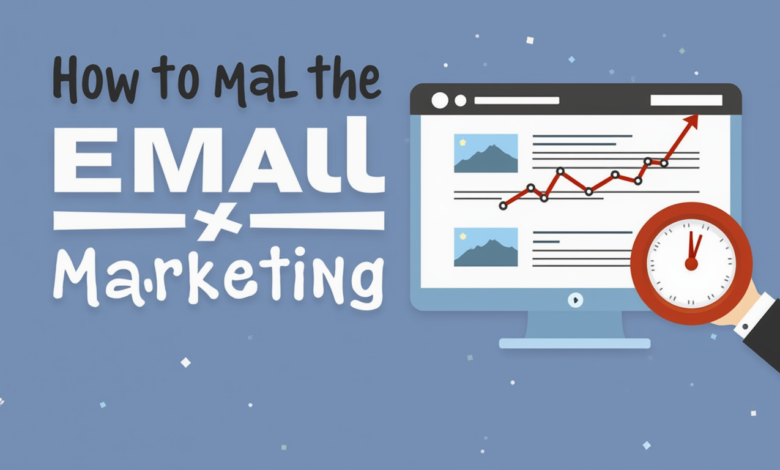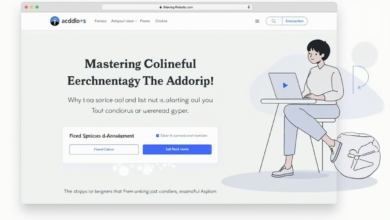Total Reach for Email Marketing

Email marketing remains one of the most powerful tools for connecting with your audience, driving engagement, and boosting revenue. But while open rates, click-through rates, and conversion metrics often take the spotlight, the foundation of success lies in an often-overlooked metric: total reach.
Your total reach determines how effectively you connect with your audience. Without maximizing this, even the best-crafted emails risk falling short. In this guide, we’ll explore what total reach means, why it matters, and how you can enhance it to achieve your email marketing goals.
Table of Contents
What Is Total Reach in Email Marketing?
Defining Total Reach
At its core, total reach in email marketing refers to the total number of people your emails are capable of reaching. It’s not just about the size of your subscriber list; it’s about the actual audience receiving your messages. Factors like deliverability, list hygiene, and engagement directly influence this number.
Unlike surface-level metrics, total reach provides a clearer view of how well your email campaigns connect with your target audience. It’s the foundation for achieving higher open rates, clicks, and ultimately, conversions.
Why Total Reach Matters
Your total reach directly impacts your campaign’s success:
- Better ROI: The more people you can successfully reach, the higher the potential return on your investment.
- Brand Awareness: Expanding your total reach increases visibility, keeping your brand top of mind.
- Long-Term Engagement: Maintaining a high total reach ensures consistent communication with your audience.
If you’re ignoring total reach, you might be leaving untapped potential on the table.
Factors Affecting Total Reach in Email Marketing
Understanding what influences total reach is the first step to optimizing it.
1. List Quality
A well-maintained email list is the backbone of total reach. Here’s what you need to focus on:
- Active Subscribers: Ensure your list is filled with people genuinely interested in your content.
- Segmentation: Break your list into smaller groups based on behavior, interests, or demographics.
- Regular Cleaning: Remove invalid or inactive email addresses to prevent high bounce rates.
2. Email Deliverability
Deliverability is all about ensuring your emails land in inboxes rather than spam folders. Key factors include:
- Domain Reputation: Maintain a strong sender reputation by avoiding spammy practices.
- Authentication: Implement SPF, DKIM, and DMARC to prove your emails are legitimate.
- Content Quality: Avoid excessive use of promotional language, special characters, or misleading subject lines.
3. Personalization and Relevance
The more tailored your emails, the more likely they are to be opened and engaged with. Consider:
- Dynamic Content: Use subscriber data to personalize subject lines and email body text.
- Behavioral Triggers: Send emails based on user actions, such as abandoned carts or recent purchases.
1. Grow Your Subscriber List
Building a strong subscriber base is essential for expanding your total reach. Here’s how to do it effectively:
- Website Sign-Up Forms: Place prominent sign-up forms on your homepage, blog, or landing pages.
- Incentives: Offer discounts, free resources, or exclusive content in exchange for email addresses.
- Social Media Integration: Use platforms like Instagram and Facebook to encourage sign-ups.
2. Optimize Email Frequency
Finding the right balance between staying relevant and overwhelming your audience is critical.
- A/B Testing: Test different sending frequencies to identify what resonates with your audience.
- Engagement Monitoring: Pay attention to unsubscribe rates or complaints to avoid over-sending.
3. Cross-Promotion Opportunities
Collaborating with other brands or platforms can introduce your emails to new audiences.
- Partnerships: Work with complementary brands to promote each other’s email lists.
- Lead Magnets: Co-create valuable resources that encourage sign-ups for both parties.
Tools and Metrics to Measure Total Reach
1. Essential Tools for Email Marketing
Leverage the right tools to maximize your total reach. Some popular platforms include:
- Mailchimp: Offers robust analytics and automation tools.
- HubSpot: Combines CRM with advanced email marketing features.
- Sendinblue: Focuses on deliverability and detailed reporting.
2. Key Metrics to Track
Regularly monitoring metrics helps you understand and improve your total reach:
- Bounce Rate: Indicates how many emails failed to reach inboxes.
- Delivery Rate: The percentage of emails successfully delivered.
- Engagement Metrics: Open rates, click-through rates, and replies can reflect your audience’s interest.
Example of Total Reach Metrics (Table):
| Metric | Ideal Percentage |
|---|---|
| Delivery Rate | 95% or higher |
| Bounce Rate | Below 2% |
| Open Rate | 20-40% |
| Click-Through Rate | 3-10% |
Common Challenges and Solutions
1. Low Open Rates
Low open rates often signal that your subject lines or timing might not resonate.
Solutions:
- Craft engaging subject lines with personalization and urgency.
- Experiment with sending times to match your audience’s habits.
2. High Bounce Rates
Bounced emails damage your sender reputation and reduce total reach.
Solutions:
- Use email verification tools to validate addresses.
- Monitor and remove invalid addresses regularly.
3. Declining Engagement
Inactive subscribers drag down your total reach over time.
Solutions:
- Run re-engagement campaigns with compelling offers.
- Segment your list to target inactive subscribers separately.
FAQ: Total Reach for Email Marketing
What is total reach in email marketing?
Total reach refers to the number of people your email campaigns can effectively connect with, factoring in deliverability and engagement.
How can I improve my total reach?
Focus on growing your subscriber list, maintaining good email hygiene, and improving deliverability through strong domain practices.
Why is deliverability important for total reach?
If your emails don’t reach inboxes, your total reach decreases, and your efforts to engage the audience become ineffective.
Can I measure total reach with a tool?
Yes, email marketing platforms like Mailchimp or HubSpot provide metrics that give insight into your total reach, including delivery and bounce rates.
Conclusion
Your total reach isn’t just a number—it’s a reflection of your ability to connect with your audience and achieve your marketing goals. By focusing on list quality, deliverability, and engagement, you can expand your reach and unlock the full potential of email marketing.
Start today by implementing these strategies and watch as your email campaigns transform into powerful tools for growth and connection



